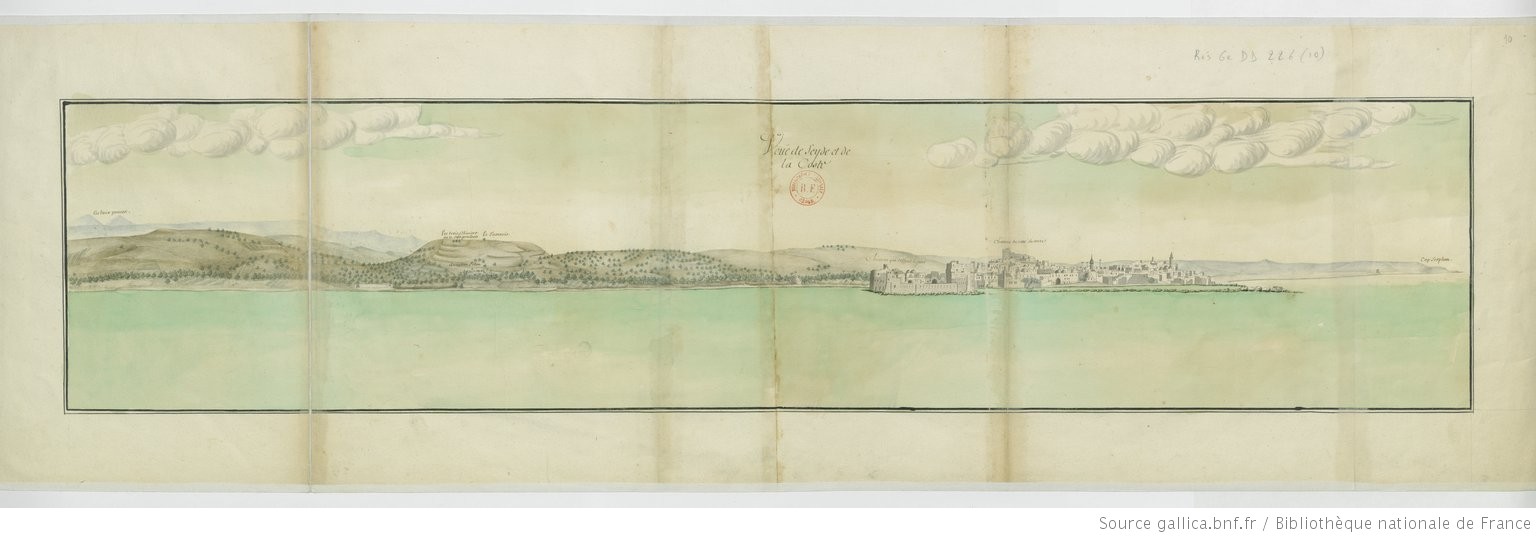
Saida: A City's Urban History through its Inscriptions
On the 6th of July of the year 1700, Abd al-Ghani al-Nabulsi, a renouned Damascene scholar, left Damascus on a trip to Tripoli. His first stop was Saida, an east mediterranean city on the coast of modern day Lebanon. Al-Nabulsi kept a record of his trip in which he describes the city. Al Nabulsi states:1
"واعلم أنّ ببلدة صيدا مساجد وزوايا كثيرة، وفيها من الجوامع ستّة، كلّ واحد منها بمنبر وخطبة تقام فيه الجمعة. الأوّل الجامع الكبير العمري، وقد تقدّم ذكره. الثّاني هذا الجامع المسمّى بجامع الكيخية. الثالث جامع ابن قُطيش، بالتّصغير والقاف، وهو جامع جديد منوّر، فيه بركة ماء وفُسقيّة صغيرة من رخام، يجري إليها ماء عذب، وهو أصغر من جامع الكيخية. وهذه الثلاثة جوامع مع منابرهم من الرّخام الأبيض. الرابع جامع البحر، وهو مقدار جامع ابن قطيش، وهو مطلّ على البحر، وفيه بركة ماء غزيرة. الخامس جامع السّوق، ويعرف أيضًا بجامع البطّاح، بالتشديد للطاء المهملة والحاء المهملة. وسمّي يه لأن فيه رجلّا من الأولياء مدفونًّا يه، يقال به الشّيخ عليّ الغزّي، معتمد أهل صيدا، واشتهر عندهم أنّه لا يحلف أحد عنده إلّا صادقًا، وإذا حلف كاذبًا بلي بكائنة. السادس جامع المحتسب، وهو بالقرب من سراية الباشا وأصغر الجميع، وفيه بركة ماء جارية"
"Note that in the town, Saida, there are many mosques and lodges. Six of its mosques have a minbar each, and they accommodate Friday prayers. The first mosque is The Grand Omari Mosque, and I have mentioned it before. The second is the so called Kekhya mosque. The third is Ibn Qutaish’s Mosque, and it is a new luminous mosque. It has a water reservoir and a marble pond to which fresh water is supplied. It is smaller than the Kekhya mosque. The minbars of these three mosques are made of white marble. The fourth is al-Bahr (the sea) mosque, and it is as big as Ibn Qutaysh’s mosque, and it has a sea view and a pond with abundant water. The fourth is the market mosque. It is also known as al-Battah mosque. It was given this name because a holy man is buried in it. He is known as Sheikh Ali al-Ghazzi, on whom Saidonians rely. It was known amongst them that no one can swear at his grave if he’s lying. If he swears and he was lying, something bad would happen to him. The sixth is al-Muhtasib Mosque. It is close to the Pasha’s seray. It is the smallest of all, and it has a running water pond"2
"وحيث ذكرنا الجوامع فلا بأس أن نذكر ما فيها من الحمّامات، فنقول: وهي ثلاثة. الأوّل حمّام السّوق، وهو أصغر الثلاثة. الثاني حمّام الشيخ، وهو بقرب جامع الكيخيّة. الثّالث حمّام الأمير، وهو مطلّ على البحر، كبير، ذو مياه غزيرة، مبلّط بالرّخام، وفي مسلخه بركة ماء كبيرة عالية، مثمّنة من رخام أبيض… وفي داخل هذا الحمام بركتين كبيرتين، تسمّيه العامّة المغطس، الواحدة ماؤها حارّ، والأخرى ماؤها بارد."
"Since we mentioned the mosques, it would be fine to mention the town’s hammams (public baths). In that we say: there are three. The first is Hammam al-Souk (The Market’s Hammam), and it’s the smallest of all three. The second is Hammam al-Sheikh (The Sheikh’s Hammam), and it is close to the Kekhya mosque. The third is Hammam al-Amir (The Prince’s Hammam). It is spacious, and it has abundant water, a sea view, and marble tiles. In its center there is a hexagonal water pond…. Inside this Hammam there are two big water reservoirs, the people call them the tubs. One has hot water in it, and the other has cold water"
Notes
- Abd al-Ghani al-Nabulsi, Al-Tuhfa al-Nabulsiyya fi al-Rihla al-Tarabulusiyya. Al-Thaqafa al-Diniyya Library.
- Unless otherwise indicated, all translations are my own.